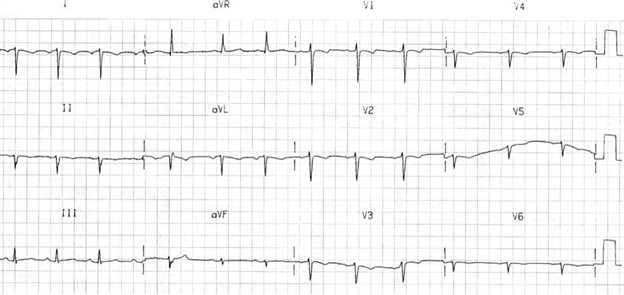Congenital and Valvular Disease Flashcard
Rationale
B. Rationale: Eisenmenger syndrome is a congenital heart disease wherein a long-standing left-to-right cardiac shunt causes severe pulmonary hypertension. As a consequence, there is extreme right axis deviation and tall R waves in V1 and V2 and possibly alterations of the ST/T waves in the precordial leads.
Question
In Eisenmenger syndrome, there will be extreme right axis deviation and tall R waves in precordial leads V1 and V2 and possible alterations in the ST/T waves in the precordial leads. This occurs because of which one of the following anatomical and physiological changes?
a. Hypertrophy of the left atrium
b. Extreme left to right shunting causing anatomical changes in the pulmonary arteries
c. Abnormal foci of impulses
d. The presence of a left bundle branch block
Answer
b. Extreme left to right shunting causing anatomical changes in the pulmonary arteries
Rationale
D. Rationale: In situs inversus, there is an inversion of the P waves and QRS complexes in the limb leads and a decrease in the R voltage in leads V4 to V6.
Answer choice A – In Ebstein anomaly, there are abnormally large P waves and low amplitude QRS complexes.
Answer choice B – Tetralogy of Fallot would manifest as a right axis deviation.
Answer choice C – Pulmonary stenosis would manifest as right axis deviation and RVH.
Question
You notice a striking abnormality in a 12-lead ECG tracing; the P waves and QRS complexes are inverted in the limb leads, and there is a decreased R wave amplitude in precordial leads V4 to V6. What is your diagnosis?

a. Ebstein anomaly
b. Tetralogy of Fallot
c. Valvular pulmonary stenosis
d. Situs inversus
Answer
d. Situs inversus